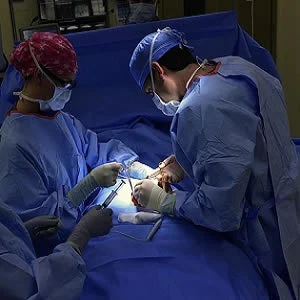A new study shows improved patient outcomes with extensive repair of aortic dissection. Findings are published in The Annals of Thoracic Surgery.
Aortic dissection is a tear in the wall of the aorta which causes the inner and middle layers of the aorta to separate. Type A aortic dissection is one of the riskiest operations in cardiothoracic surgery. In Type A dissection, the tear begins where the aorta exits the heart and extends from the upper section to the lower section of the aorta.
Study findings suggest that new surgical techniques and improved postoperative care could result in better long-term outcomes and lower rates of complications for patients.
Mortality rate for type A aortic dissection surgery is around 19%. The risk of associated complications such as pneumonia and reoperation is lower. 85% of aortic dissection surgeries use cerebral perfusion. Since aortic dissection is very risky with nearly 40% of people dying instantly and the risk of death increasing 1% for every hour that treatment is delayed, surgeons are adapting their strategies to more aggressively treat aortic dissections but without any additional upfront risk.
During this study, the researchers reviewed records for 884 patients who underwent acute Type A aortic dissection. The study was not limited to a few high-volume centres but included all the centres in the Commonwealth of Virginia. Study patients were grouped into three operative eras - from 2003-2008, from 2009-2012 and from 2013-2015. Patients were mainly men aged 50-65 years and hypertension was the most common risk factor among them.
Analysis showed that patients underwent fairly complex operations including aortic root surgery and aortic arch repair. The risk of mortality remained stable among the study population and the risk of pneumonia or reoperation also remained low.
“Surgeons are increasingly comfortable with performing more extensive repairs of the aorta and utilising new surgical techniques, and they are doing so without increasing risk,” explained Dr. Ghanta. “However, while the operative mortality numbers are lower than historical outcomes, 19% is still significant and further improvement is needed.”
Since the aortic arch feeds the carotid arteries which supply the brain, surgeons have to be very careful about brain protection. During this analysis, the researchers also evaluated trends in cerebral blood circulation and cold temperature strategies that were undertaken to protect the heart and brain during this procedure. Their findings showed an increased use of selective cerebral perfusion - from 74% in the middle era to 85% in the current era.
Dr Ghanta does point out that their study found a lack of consensus on the optimal strategy and that there is a need to further evaluate repair and protection techniques. Surgeons need to make these complex procedures faster and easier and also need to balance the risks and long-term outcomes.
Source: The Annals of Thoracic Surgery
Image Credit: Pixabay
References:
Bavaria, Joseph E et al. (2017) Surgeon Involvement in Transcatheter Aortic Valve Replacement in the United States: A 2016 Society of Thoracic Surgeons Survey. The Annals of Thoracic Surgery. DOI: http://dx.doi.org/10.1016/j.athoracsur.2017.03.055
Latest Articles
aortic dissection, patient outcomes, cerebral perfusion, type A aortic dissection surgery
A new study shows improved patient outcomes with extensive repair of aortic dissection. Findings are published in The Annals of Thoracic Surgery.








